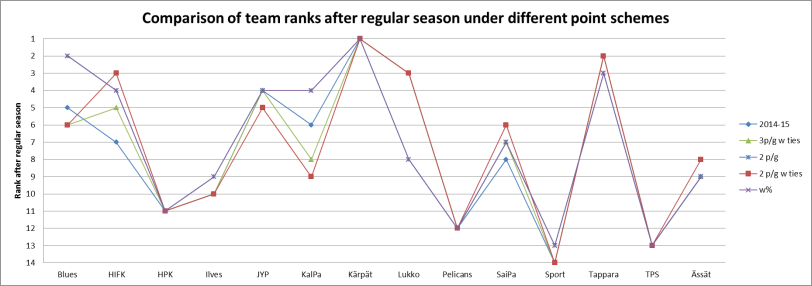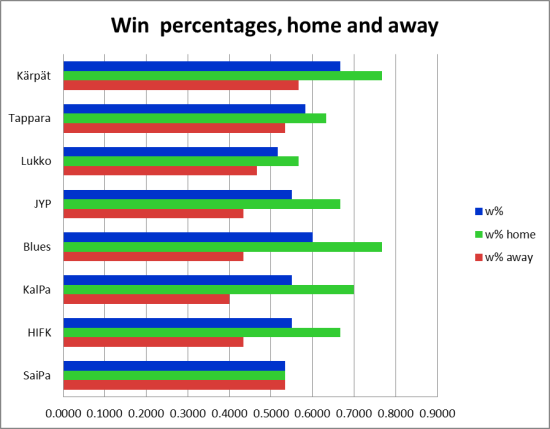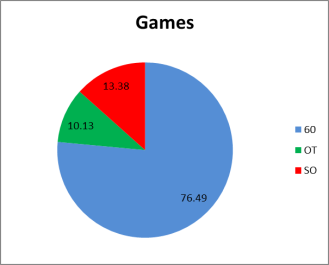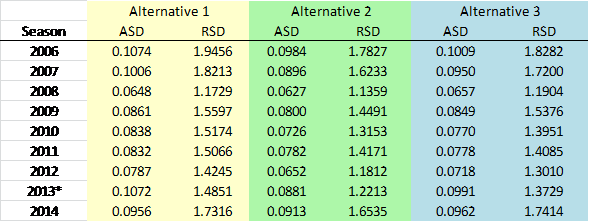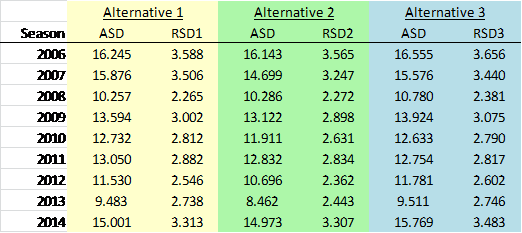Earlier this month London School of Economics blog ran a post by Asit Biswas and Julian Kircherr about the disconnect in information between academia and general public, including policy makers. The problem is two-fold: On one hand, the way a scholar’s merits are measured purely by the amount of publishing in peer-reviewed journals, and on the other, how people outside of academia aren’t accessing the information.
Many scholars aspire to contribute to their discipline’s knowledge and to influence practitioner’s decision-making. However, it is widely acknowledged practitioners rarely read articles published in peer-reviewed journals. We know of no senior policy-maker, or senior business leader who ever reads any peer-reviewed papers, even in recognized journals like Nature, Science or The Lancet.
And they continue:
First of all, most journals are prohibitively expensive to access for anyone outside of academia. Even if the current open-access-movement becomes more successful, the incomprehensible jargon and the sheer volume and lengths of papers (mostly unnecessary!) would still prevent practitioners (including journalists) from reading them.
But, hope endures. Those in academia are, albeit slowly, taking to writing op-eds and blogs to provide the rest of the world easier access to the discussion. Is the rest of the world meeting them half-way?
Now, I don’t know if anyone in the National Hockey League is reading academic journals. I don’t know if publications such as Journal of Sports Economics has ever crossed the desk of anyone in the league. Maybe so. But from what I can tell, they certainly didn’t read the article “The “Second” Season: The Effects of Playoff Tournaments on Competitive Balance Outcomes in the NHL and NBA” by Neil Longley and Nelson J. Lacey (JSE, Volume 13, Number 5, October 2012).
Or if they did, they did not understand it.
Longley and Lacey studied the extent playoffs rearrange the regular season standings and find the “the natural reconfiguring effect of playoffs can be further enhanced by the choice of playoff structure employed by a league” (p.473). Tournaments, such as the playoffs in a league, can be thought to have objectives such as “delayed confrontation” and “sincerity rewarded”. Delayed confrontation simply means that the tops seeds meet as late in the tournament as possible, and sincerity rewarded is the way top seeds are given more favorable first-round match-ups.
In the article Longley and Lacey compare the fulfillment of these objectives under different tournament structures. The 16 teams making the playoffs are all given a quality measure Q usually measured by total points, such that the best team is of quality Q1, the second best Q2, and so on to Q16. Depending on the tournament structure, the teams are seeded, so that the team in first place is seed 1 (S1), the second-place team S2, and so on to S16.
League Pooling, or the “stationary” playoffs
The simplest case is that of league-wide pooling, the system used for example in Finnish hockey. The teams are all ranked together as one group, and Q1 is seeded as S1, Q2 as S2 and so on. The playoff match-ups are then assigned so that S1 plays S16, S2 plays S15 and so on.
Under league pooling, then, the best team in the league always faces the 16th best team, the second-best the second-poorest etc. This system “provides the maximum reward for the best teams” (sincerity rewarded) and has the “greatest likelihood of preserving the regular season ordering”. The likelihood of upsets is the lowest under league pooling.
Conference pooling
In conference pooling the teams are divided to two conferences (A and B), and 8 teams from both conferences make it to the playoffs. Teams are seeded within conference, so that the highest seeded team in conference A (S1a) plays S8a, S1b plays S8b, S2a plays S7a, and so on.
Now teams opponent depends on the quality of the team (Q, determining how high the team is seeded) but also on the quality of the other teams in the conference. Assuming random assignment to conferences, 12,870 different combinations of teams in two conferences exist.
Notably, random assignment does not mean teams teams are drawn out of a hat with “Okay, and Minnesota will be playing in the Eastern Conference this year”. It simply means that the allocation of teams to conferences does not depend on their quality. So in effect the team qualities are assigned at random.
For example, let’s say the playoff teams in conference A are Q1, Q2, Q3, Q6, Q9, Q10, Q12, and Q13. So conference B has Q4, Q5, Q7, Q8, Q11, Q14, Q15, and Q16. The conferences look, at a glance, relatively even, as both conferences have good and poorer teams in the mix. Yet, as the playoffs are played within conference, each team in A has a less favorable matchup than they would have under league pooling! Q1 plays Q13 instead of Q14, Q2 plays Q12 instead of Q13, and so on.
Longley and Lacey took the 12,870 different conference allocations and calculated the probabilities of each potential matchup under conference pooling. For example, whereas Q1 faced Q16 for sure (100% probability) under league pooling, now the probability for that is only 46.7%. There is even a very small but positive probability Q1 faces Q8 in the first round (if all Top 8 teams are in the same conference).
When the expected matchups are calculated, “Q1 to Q8 all fare worse under a conference-pooling system” and all 8 lowest quality teams gain. Conference pooling, then, “should increase the likelihood of first round “upsets””, thus “having a good regular-season is less rewarded under a conference-pooling system”. (p. 484)
Divisional pooling
What if conferences are broken down even further? The NHL did this for 82-93 period. Four divisions, with Top4 in each advancing to intradivisional first round, with S1 playing S4, S2 playing S3 in each division.
Assuming random allocation of teams/quality, as above, there are 1,820 different combinations of teams for each division. Again, Longley and Lacey calculated the probabilities of each matchup occurring. Now the odds of Q1 facing Q16 is 0.200. (Remember, it was 100% under league pooling, and 0.467 under conference pooling.) And while highly unlikely, it is possible (0.2%) Q1 could be facing Q4!
The expected matchup for Q1 goes from Q16 under league pooling to Q15 under conference pooling to Q13 under divisional pooling. Overall, the divisional pooling compresses even further the first-round matchups, benefiting the lowest quality teams.
Modified conference pooling
This is the system used in the NHL (94-98) and NBA (84-04). Two conferences, both with two divisions. Top 8 in each conference are seeded just like under conference pooling, except that the first-place teams in the two divisions are automatically seeded S1 and S2 in the conference.
This means, that in extreme cases, as Longley and Lacey point out, Q15 could end up S2 in its conference. (If Top 6 in conference are all in same division, so Q15 wins its division.) This would mean that Q15 would face Q14 in the first round.
The expected playoff matchups are slightly more complicated to calculate, so I won’t go through it. But suffice it to say that while the modification has no effect on Q1 or Q16, it does impact other teams, in general favoring the poorer teams. This is because it provided them with a possibility to “jump up” in the seeding, like Q15 in above example.
So how did it go, really?
Longley and Lacey looked at the different systems as they have been used in NHL and NBA, and found the results conform very closely to the predicted outcomes. Under divisional pooling the correlation was +0.86 with the NHL data. Modified conference pooling had correlations of +0.95 for NHL and +0.99 for NBA.
Few points from the actual data that are interesting:
- under divisional pooling, Q1’s average opponent was 12.75. The predicted expected opponent was Q13. Both are well above the Q16 of league pooling.
- also under divisional pooling, Q16’s opponent was, on average, 5.75. (Under league pooling Q1). Q10, on the other hand had the 4th favorable matchup in the league (10.17), which is better than those of Q4, Q5, Q6, Q7, Q8 or Q9! And Q14 faced a more favorable opponent than Q6, Q7 and Q8 above it.
- under divisional pooling, both matchups Q2 vs Q3, and Q14 vs Q15 occured.
- under modified conference pooling, Q12 vs Q13 happened in both leagues.
- in the NBA, under modified conference pooling, and over 21 years, the average first round matchup for Q9 was more favorable than for Q6, Q7 and Q8.
But it evens out in the end, right?
Yes, it does, a little. And that’s only if you make it through the first round. Longley and Lacey calculated the cumulative probabilities of Q1 advancing through different rounds in the playoffs under different pooling systems.
Probability of Q1 winning 2 rounds under divisional pooling is 0.4046, whereas under league pooling it is 0.4775. That is, the highest quality team is 15.27% less likely to win two rounds in the playoffs under divisional pooling than under league pooling!
Three rounds of wins have probabilities of 0.2346 under divisional pooling and 0.2760 under league pooling. And the probabilities of Q1 winning the championship are 0.1284 under divisional pooling and 0.1460 under league pooling. That means that under divisional pooling the Q1 is 12.05% less likely to win the championship than under league pooling!
The difference does even out somewhat, because as the team advances it is now facing the poorer teams that made it through to further rounds. But it doesn’t completely disappear. In conclusion, then, Longley and Lacey state, that “different playoff tournament structures will provide different levels of advantage to the best teams”. And the further we brake the pooling, the more it favors the poorer teams.
So should we have league pooling?
Not necessarily. There are plenty of valid arguments in favor of smaller pooling, such as
- profit maximization: it makes sense, purely in terms of logistics, to have more geographically focused matchups. Travel costs, both monetary and otherwise, are an issue. There are also potentially more fan interest in regional matchups (local rivalry in a factor in fan interest) so ticket sales cold factor in here. Also in terms of visiting team fans, as far-away fans are less likely to show up.
- fan interest in upsets: people seem to like “Cinderella stories” and cheering for the underdog. Which, some could argue, is the whole point of playoffs.
- income compensation: in so far as regular season wins/standings are influenced by payroll the playoffs offer an opportunity to poorer (literally) teams to make up for weaker regular season performance. Thus it would positively influence competitive balance. Of course, under salary caps, this isn’t such a concern anymore.
But, as Longley and Lacey conclude, “less-than-stationary playoff systems can be quite ingenious in that they appear quite legitimate and fair … but at the same time these systems are actually providing a disproportionate benefit to the lower quality teams” (p. 490) Doing so, they diminish the meaningfulness of the regular season, creating incentive issues which are potentially reflected in fan interest.
Really, NHL? The divisional bracket system?
The NHL completely redid their playoff tournament structure for this season, coming up with essentially modified within-division bracket system. Which I guess I almost get, as the bracket is so very pretty, and easy to promote and sell to the fans. The whole “predict the bracket”-thing? Great! My Twitter feed was full of predictions. (And no, I’m not being sarcastic for once, I promise.)
But, if we look at the matchups, and compare them with the stationary (league pooling) version, things get interesting.
Two of the matchups actually correspond to the stationary matchups. Anaheim (Q3) plays Winnipeg (Q14) and Tampa Bay (Q5) faces Detroit (Q12).
In the Vancouver vs Calcary we’re letting them off easy. Both teams are facing a poorer opponent they would be under league pooling. Vancouver (Q8) faces Calgary (Q16). Under league pooling the matchups would be Q8 vs Q9 and Q16 vs Q1.
In the Washington vs New York Islanders series it’s the same only less so, as Washington “should” be facing Q8 and Islanders Q7. However, the series really is Q9 (WSH) vs Q10 (NYI). So both teams are facing a poorer teams than under league pooling.
In the rest of the series teams are facing higher quality teams than they would under league pooling. We have New York Rangers (Q1) vs Pittsburgh (Q15), whereas under league pooling the pairings would be Q1 vs Q16 and Q15 vs Q2.
It gets more severe as we go on. Montreal vs Ottava is now Q2 vs Q13, instead of Q2 vs Q15 and Q13 vs Q4. In the St Louis vs Minnesota series we have Q4 playing Q11, whereas under league pooling we’d have Q4 vs Q13 and Q11 vs Q6.
Finally, poor Nashville and Chicago. They’re facing each other, despite being Q6 and Q7, respectively. Under league pooling Nashville would face Q11 and Chicago Q10.
In conclusion, out of 16 teams, 4 faced who they would under league pooling, and another 4 faced a weaker opponent than their quality would suggest. That means half of the teams had a more difficult matchup than they would under league pooling.
I’d love to hear the reasoning for this change. Other than the pretty bracket with pictures and arrows and nice little boxes you can fill out.

